Untreated sewage is the coral reef’s silent yet devastating killer. In places like Bali, Komodo, and Raja Ampat, the growth of tourism is inadvertently killing the reefs that people come to see. Human wastewater releases dangerously high concentrations of nitrogen, phosphorus, and gut bacteria directly onto delicate reef ecosystems. This overwhelming nutrient load fuels disease outbreaks and drives the majority of coral decline worldwide, an ecological crisis that is often tragically overlooked. It’s estimated that as little as 1% of urban wastewater in Indonesia is safely treated.
Fortunately, some communities are taking action. We are pleased to review a brilliant, local solution here in Indonesia. This is the inspiring story of Reef Saver, a constructed wetland innovation developed and implemented by a dedicated community in Raja Ampat.
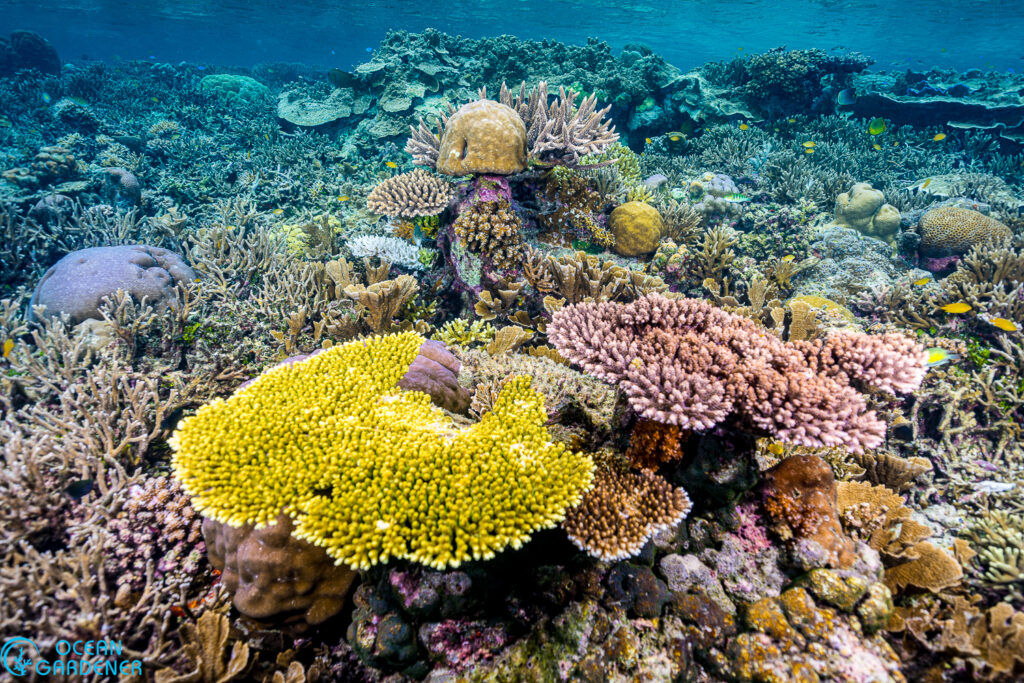
Untreated wastewater’s effects on corals
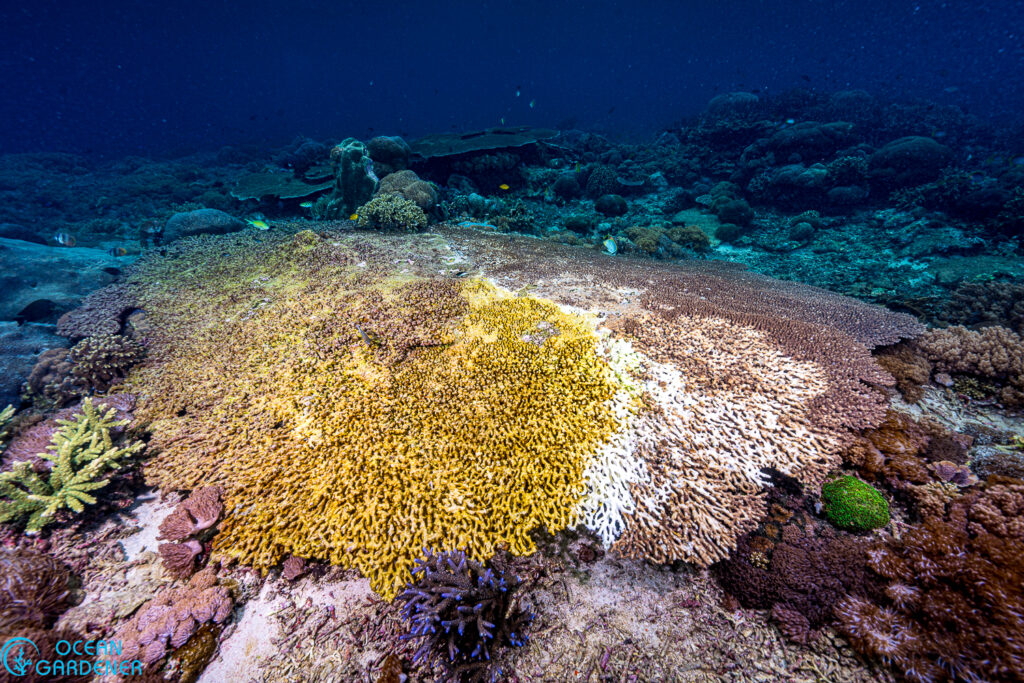
Mass bleaching events, anchoring, bad and over-fishing practices are responsible for considerable damage to coral reefs. Diseases triggered by pollution, and the number one pollution being untreated or improperly treated sewage water, cause tremendous coral mortality. Some species are more susceptible than others. A very important genera of corals are being wiped out from the ocean due to our incapacity to treat our wastewater properly. And what is the most frustrating about it is that simple and relatively inexpensive solutions exist.
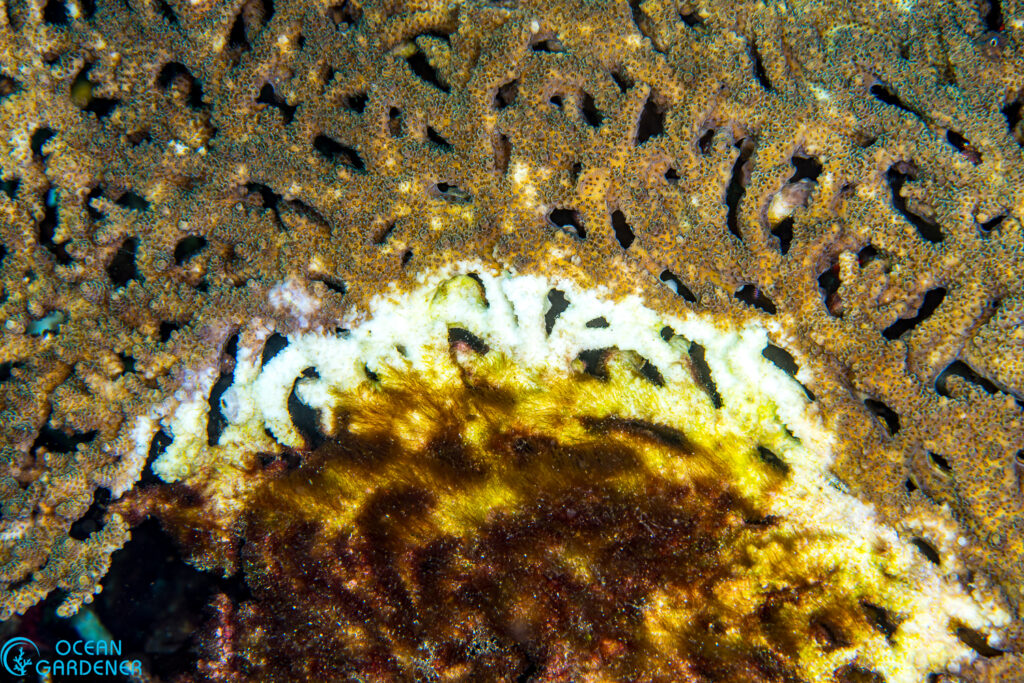
The first important thing to understand is that, usually, soils next to coral reefs are made of corals, calcium carbonate substrate, which are very porous and permeable. It means that any liquid that will fall on it will get absorbed very quickly and get through it, until it’s released further below, directly on the coral reef. In other words, it leaks straight onto the reef.
Consequences of untreated wastewater on corals
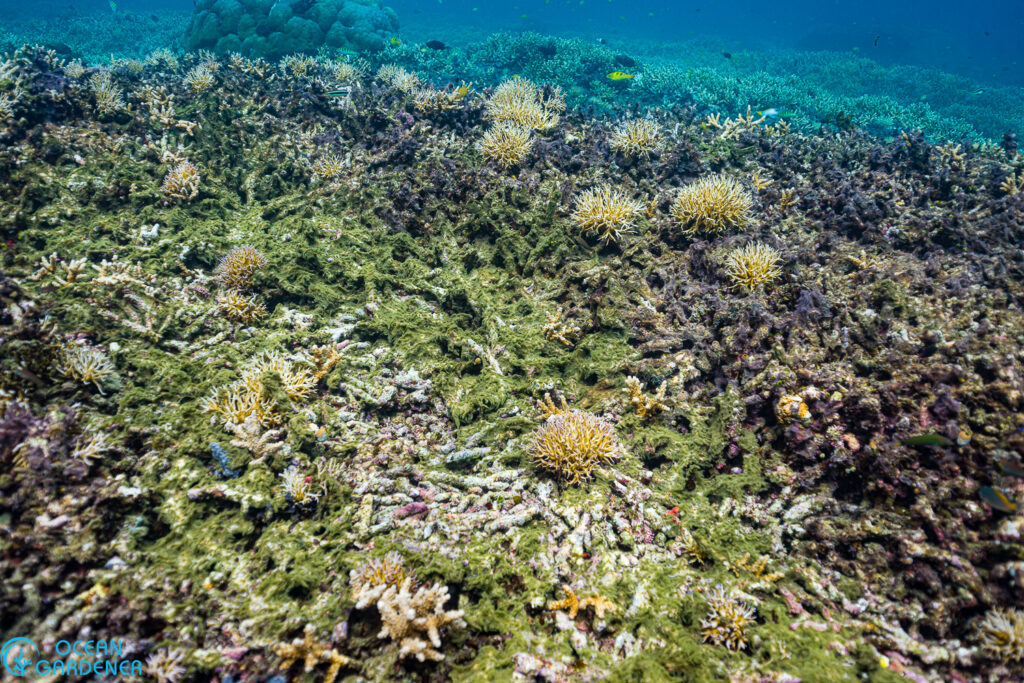
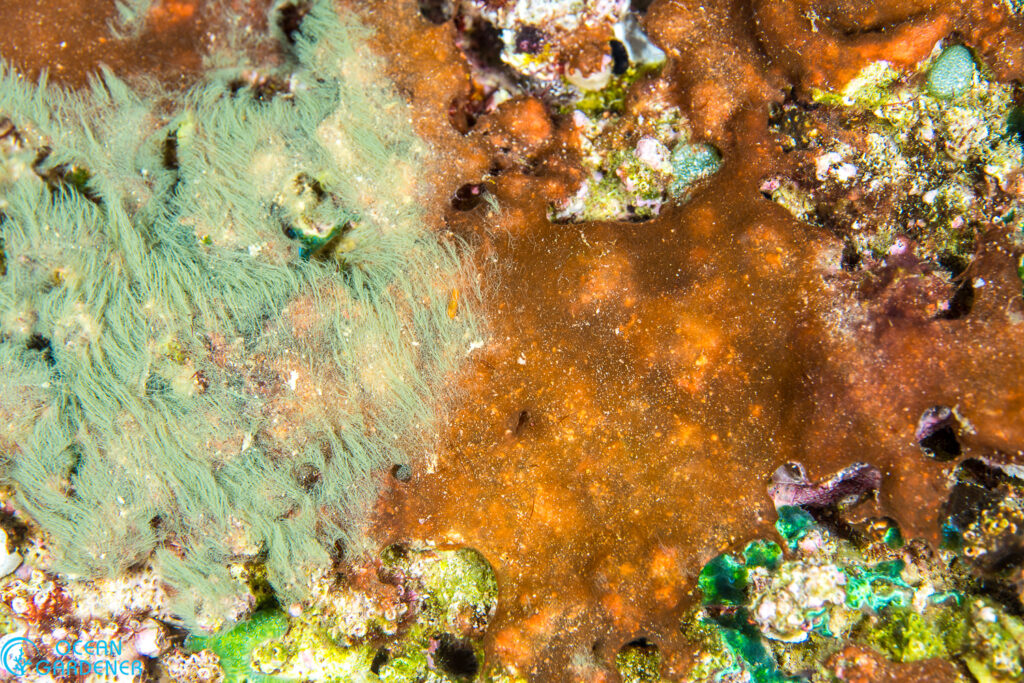
- Cyanobacteria bloom: Cyanobacteria can directly absorb Nitrogen, their population explodes, and they cover and kill corals.
- Algae blooms: Algae are much better at absorbing Nitrogen and phosphorus at higher concentrations. This gives them an edge, and they quickly outcompete corals for space.
- Coral Disease: One of the direct consequences of decreasing water quality is the shift from lytic to lysogenic cycle, where viruses stop controlling bacteria to integrate them, and create bacteria with new genetic material that leads to diseases.
Since higher temperature leads to higher metabolic activity, climate change obviously gives a tremendous advantage to algae and coral disease.
Wrongly built Septic Tanks
Many resorts and homestays actually do have septic tanks, they are called ‘Biodigester’, ‘Bioseptic Tank’, but often, they are wrongly built. Also, just a septic tank alone is not enough to properly treat sewage water. While a properly functioning bioseptic tank can reduce some fecal bacteria, it doesn’t solve the nutrient load problem. And in reality, very few resorts have one that works under perfect conditions for the right number of people.
Open Bottom Septic Tanks
The most common mistake is the open-bottom septic tank. Usually, a large concrete tank, sealed from above but completely open from the bottom. The wastewater receives the pure minimum decomposition process… It’s just concentrated and slowly leaks out from the bottom, through the porous calcium carbonate ground, and eventually onto the reef. It’s just a waste bomb in the making and a disaster for the reef.
The false impression that a septic tank is enough
Many resorts, when we visit them, always guarantee us the best water treatment possible. Usually, it’s a BioSeptic tank. While it’s better than an open-bottom septic tank, it’s still far from perfect. Usually, bacteria are better contained, but Nitrogen, Phosphorus, and many other complex molecules are still released in the effluent water.
Traditional Concrete-based Wastewater Garden
In order to get rid of most of the Nitrogen and phosphorus, the easiest solution is the sealed wastewater garden. Relying on plants to feed on the excess pollutants before they reach the reef is a remarkable solution that works even in remote areas. It can also be easily scaled up to handle a higher load.

A review of The Reef Saver in Raja Ampat
To help with the sewage issue in Raja Ampat, which probably precipitated the 2024-25 mass bleaching event in the area, one small initiative is happening. They call their solution the ‘Reef Saver’, which is designed to be implemented at a small scale in villages and homestays around Raja Ampat, Indonesia in the first phase and probably further later on.
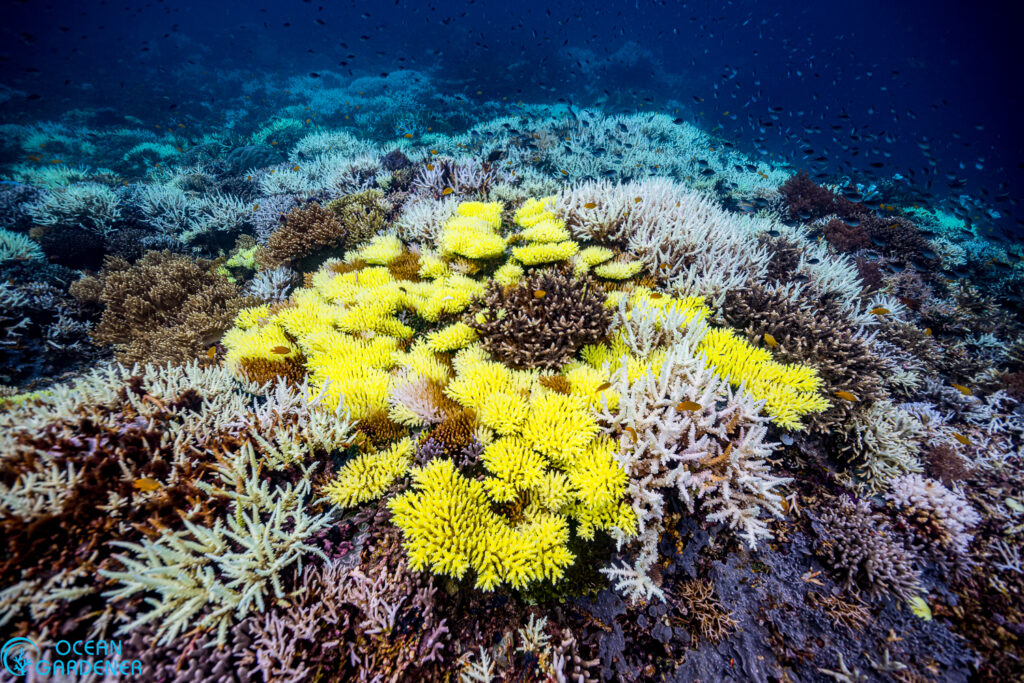
Instead of messy concrete construction, they are premade fiberglass tubes that can be easily plumbed into the outlet of the traditional bio-septic tank. It’s very similar to the traditional sealed wastewater garden but without cement or heavy machinery. It’s plug-and-play, lower cost, easier to transport and install. Since it’s modular, it is extremeley scalable, so it is not limited to one toilet.
The plant of choice in this setup is Vetiver grass (Vetiveria zizanioides). It is utilized extensively in horizontal and vertical flow wastewater gardens for its exceptional waste filtering capabilities. Planted in filter beds, the grass establishes a massive, fibrous root system that intercepts and extracts pollutants from the flowing effluent. This powerful biological filtration process significantly reduces concentrations of nitrogen, phosphorus, and other organic contaminants, purifying the water before discharge. Crucially, as the plants grow, the captured nutrients accumulate in the above-ground biomass, effectively removing the pollution from the water stream. To maintain efficiency, the grass is regularly harvested. This nutrient-rich biomass is then typically managed by composting or using it as a safe mulch for non-food crops, ensuring the sequestered pollutants are permanently removed from the system and responsibly recycled within a controlled terrestrial environment, rather than being released back onto the coral reefs.
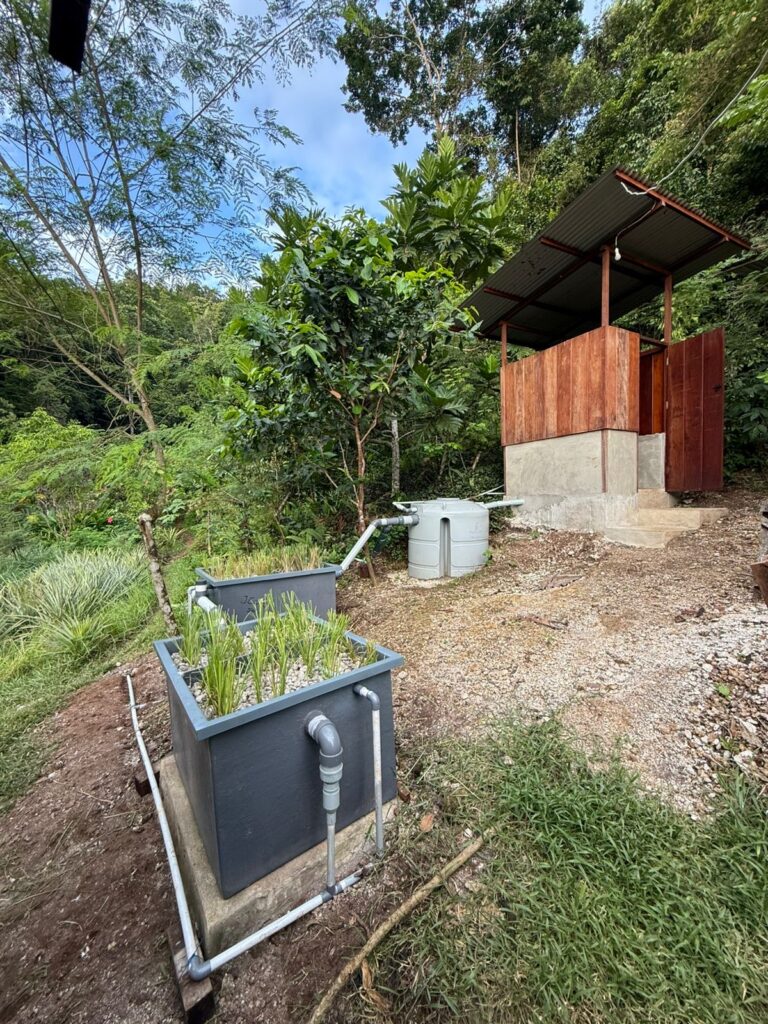
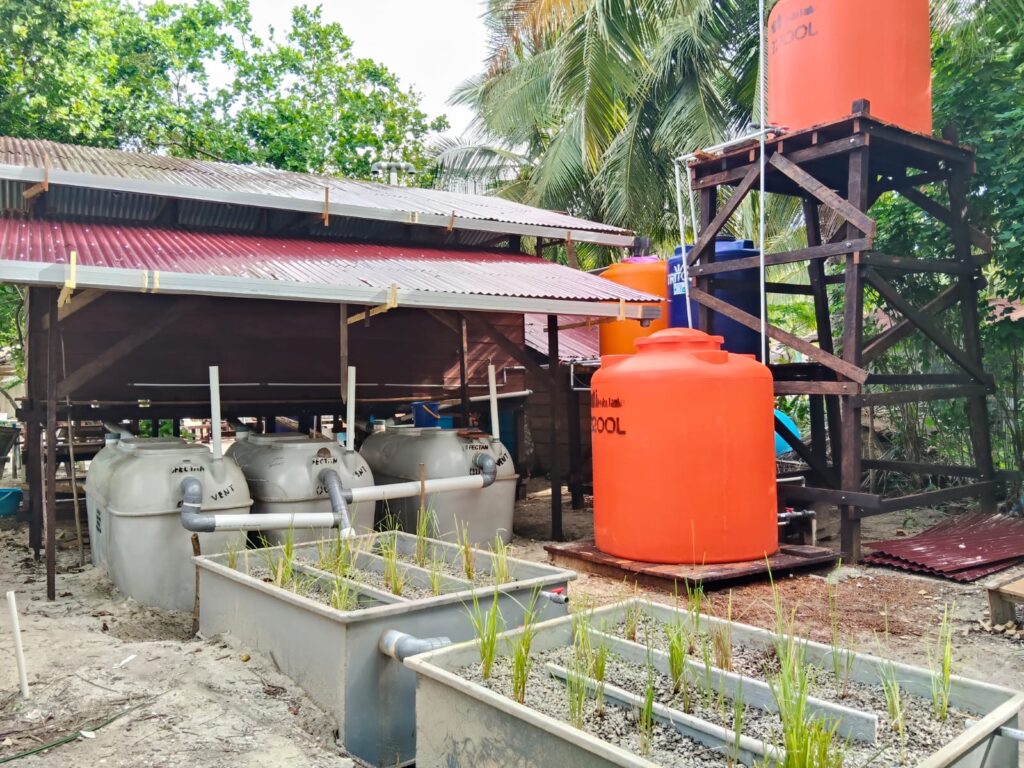
This simple, yet powerful, system is designed to treat wastewater from a handful of toilets using a biofilter tank and a small-scale wastewater garden. The result is fantastic: it works completely odor-free, guaranteeing the runoff water that reaches the sea is clean and coral-safe. This community initiative in Raja Ampat is truly inspiring. It shows that local residents, who understand the value of the vibrant reefs everyone comes to see, are actively stepping up to tackle the danger of untreated sewage. We can all learn from their commitment to preserving this global hotspot of marine diversity.